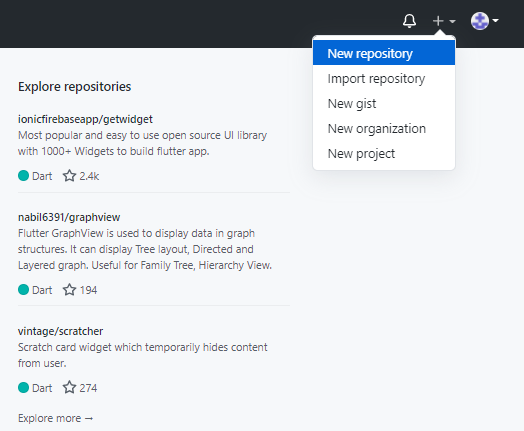GitHub is a cloud-based service which allows developers store and manage their code using Git subversion control. It helps developers and organizations track code changes and allow team collaboration.
GitHub is a developer’s best friend, and it’s an integral part of many developers’ workflows. But what about those who are just getting started? This guide will help you get up to speed with Git and GitHub so that you can be as productive as possible in your day-to-day development tasks!
Table of Contents
How to get started with Git and GitHub
Git is a version control system that records changes to files over time, so you can see what has changed in your code. It also lets multiple people work on the same project at the same time without problems! This means developers don’t need to worry about having their hard drive or laptop crash while they’re in the middle of a project.
To create your first repository on GitHub, follow these steps:
- To get started with GitHub, sign up for an account and navigate to their homepage at github.com.
- Once you’ve signed into your new account, click the plus symbol beside “New Repository.” This will create a new repository (a place where your code lives!) which includes some starter files like README.md – this file serves as documentation so other people know.

Tools
Besdies, GitHub also allows to deploy static websites. There are many tool website hosted on it for free.
- GitHub Desktop – GitHub Desktop is a community-driven GitHub application that you can download and use on your desktop. It allows for easier code collaboration with others, especially those without much coding experience. You’ll be able to work on projects with other people in the same way you would if they were sitting next to you- just more quickly and efficiently.
- peanut.dart – Easily build and deploy your Dart web app to GitHub pages.
Tips for Beginners
Here are some GitHub tips for beginers.
- Use the awesome search bar to find anything you need!
- Search for a repository by name, person, language, or topic to see whether someone’s already made something that will suit your needs.
- Find people and projects related to what you’re passionate about and follow them! You can also follow your friends and colleagues via email or RSS feed.
- Store code in repositories that you control so it’s available on any machine with Git installed. If you’re a student at this university (or if you just want to practice), feel free to go ahead and use the Stanford Student GitHub Mirror. This is a copy of our public classes, projects, and research in case GitHub is down.
- Use a password manager like LastPass or KeePass to generate and store secure passwords.
- Protect your account with two-factor authentication for an extra layer of protection.
Advanced Tips
Delete a Tag
GitHub has an option to delete a release’s information. But it won’t delete the tag in that release.
You need to use command line to delete the associated tag.
git tag -d [tag]; git push origin :[tag]
Replace [tag] with your real tag’s name such as 1.0.
Link to a Youtube video
GitHub doesn’t support video embedding. So our approach is to show a thumbnail then link it to the real video URL.
[](https://www.youtube.com/watch?v=[video_id])